January 10, 2019
Indian Novels Collective
World Hindi Day
Six translations of Hindi works that are a must read!
To mark the first Hindi Conference held in Nagpur between January 10-12 1975, World Hindi Day is celebrated every year on January 10. Hindi is one of the most widely spoken languages in India. The rich and diverse culture the country represents is extensively reflected in classics of our regional literature. Hindi novels, with its immortal themes, are often neglected by monolingual Indian because of their inability to read Hindi as fluently as English. Translation of regional Indian languages thus holds a paramount position in the accessibility of Hindi literature too.
On this World Hindi Day, we celebrate our loved language by bringing to you six Hindi Novels which have been made accessible to an English reader in translation.
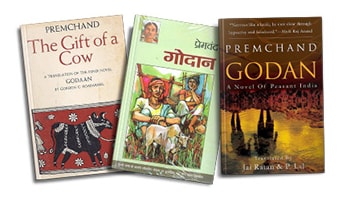 Godan By Munshi Premchand
Godan By Munshi Premchand
Translated as The Gift of a Cow by Jai Ratan and P Lal
Godan, written by Munshi Premchand in 1956, is one of the greatest novels of modern Indian literature. The novel is an important social documentary dealing with the poor economic conditions of the Indian peasants. It revolves around the social deprivation of a poor couple and the importance of a cow in the village context. The characters – Hori and Dhania – have since become immortal icons of social and class struggle. The realism, artistry and tenderness with which he has created the characters here, particularly that of Hori, are unparalleled and unsurpassed in Indian fiction.
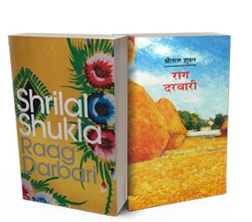 Raag Darbari by Shri Lal Shukla
Raag Darbari by Shri Lal Shukla
Translated by Gillian Wright
Raag Darbari, published in 1970, is a commentary on the disconnect between what we practice and what we preach. Rangnath, a history student visits his village and stays there to notice the stark differences between the ideals he learnt at university and the practices of his uncle, the village head. One of the most hard-hitting satires of modern India against the myriad instances of manipulation, abuse, and machinations of power struggle, Raag Darbari remains one of the most telling narratives of the chasm between libertarian ideals and social dogmas.
 Gunahon ka Devta by Dharamvir Bharati
Gunahon ka Devta by Dharamvir Bharati
Translated as Chander and Sudha by Poonam Saxena
This passionate love story revolves around the intertwined and inseparable viciousness of marriage and caste hierarchy. Chander is from a lower caste than Sudha and that is why he doesn’t dare ask for Sudha’s hand in marriage from her father. While Sudha seems to be ‘modern’, she cannot stand up to the social pressure to get married to the man of her father’s choice; Chander also forces her to abide by the wishes of her father. This, then, is the turning point in the novel but it is also through this tragedy that the story becomes appealing to the readers; making it a bestseller till this day.
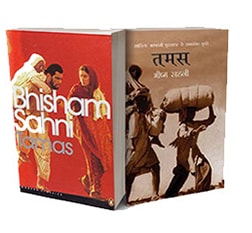 Tamas by Bhisham Sahni
Tamas by Bhisham Sahni
Translated by the author
Tamas is the ‘reflective response’ to the partition of India and Pakistan. Partially based on true events that Sahni witnessed himself in the communal riots during India’s Partition in 1947, the novel follows the life of people from both communities – Hindu and Muslim, and from various classes and backgrounds, as tensions in cities build up. It presents a snapshot of a violent and fractured period in Indian history and through fictionalization allows the reader to inhabit the minds of those who perpetrated and suffered through its worst crimes.
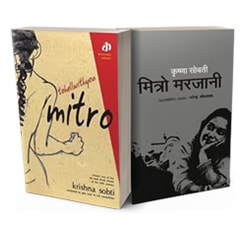 Mitro Marajani by Krishna Sobti
Mitro Marajani by Krishna Sobti
Translated as To hell with you Mitro by Gita Rajan and Raji Narasimhan
Mitro’s mystique is well summed up by her mother-in-law Dhanvanti: “No one can fathom this girl. When she’s good, she’s better than the best. When she’s bad, she’s worse than the worst.”
The vampish bahus of soap operas are nothing but inferior versions of this hell-raiser, who is undoubtedly one of the most fascinating characters in Indian literature. Its an unapologetic portrayal of a married woman who brooks no limits to her sexuality is as compelling, pertinent provocative today as when it shook the Hindi literary world in 1966.
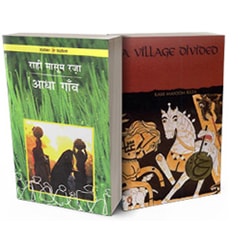 Adha Gaon by Rahi Masoom Raza
Adha Gaon by Rahi Masoom Raza
Translated as A Village Divided by Gillian Wright
Rahi Masoom Raza’s honest and controversial novel unfolds during the latter years of the Raj and the first decade of Independence and portrays the rival halves of a zamindar family, their loves, fights and litigations. It attacks the creation of Pakistan and explores the abolition of the zamindari system and its impact at the village level. This is a semi-autobiographical work set in the author’s village of Gangauli, in Ghazipur district on the fringes of Avadh.
Dr Raza becomes the voice of millions of Indian Muslims, who had nothing to do with the making of Pakistan and who refuse to leave the place they call home.
Latest Article
- As we celebrate our 75th year of Independence, take time out to read an excerpt from Vishram Bedekar’s ‘Ranaangan’
- ‘A translation of this beautifully written literary work helps us bring connections across cultures and helps us see the work in a new light.’
- Battlefield by Vishram Bedekar
A Reader’s View - Starting point for exploring Telugu short stories
- A book a day keeps anxiety at bay
- Six books that address environmental issues in Indian literature